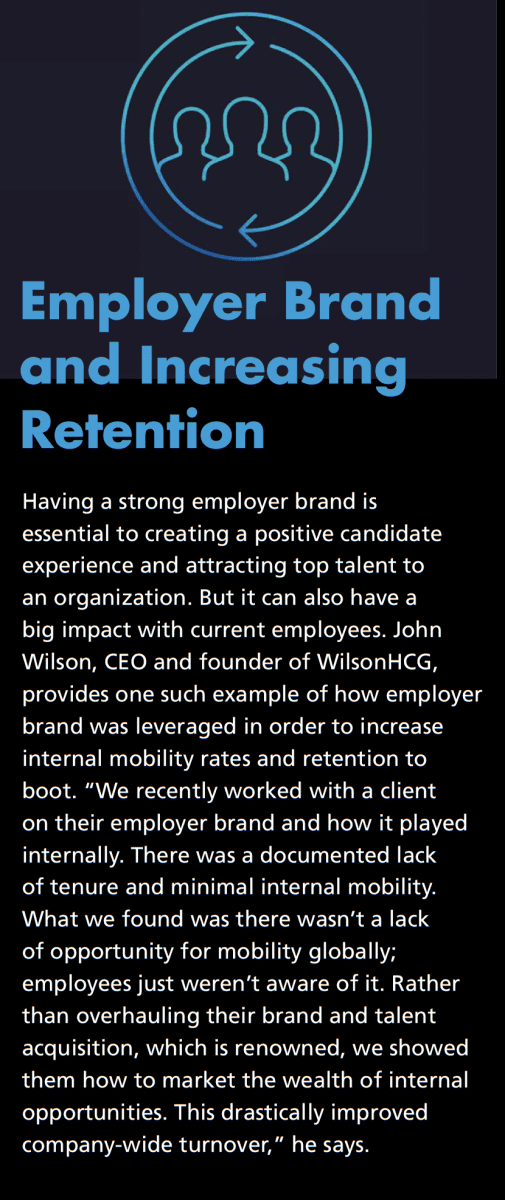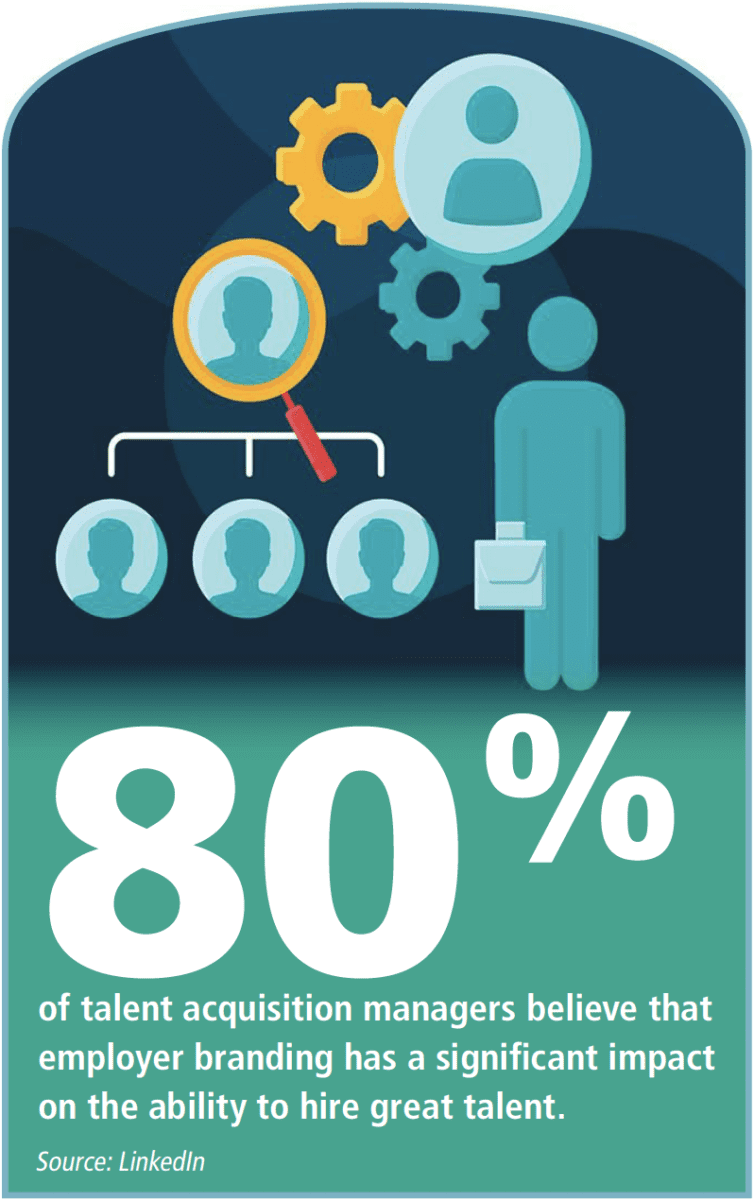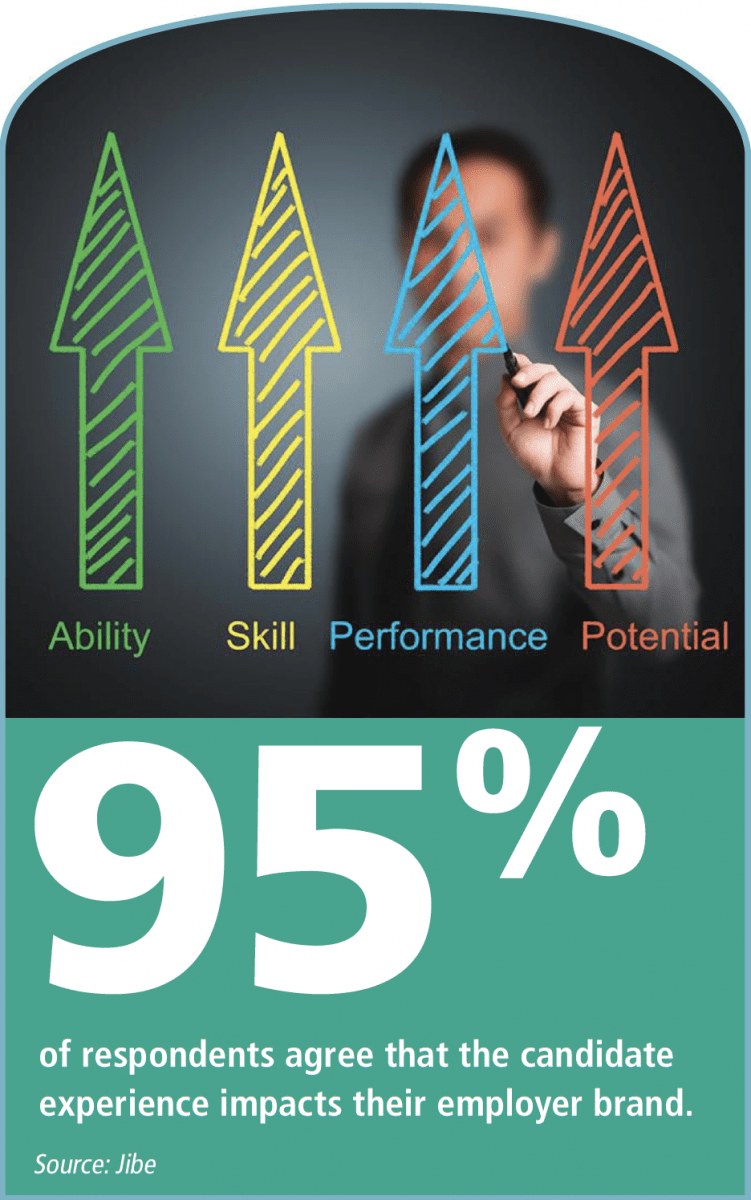Aligning employer branding and a positive candidate experience is critical to attracting the best talent.
By The Editors
“You only get one chance to make a first impression.” That advice is often given to candidates who are looking for new jobs and engulfed in the interview process. But nowadays, that philosophy is equally important for organizations seeking the best talent. First impressions are often driven by both a positive candidate experience and employer brand communication strategies. And when done right, these approaches create interest and excitement for candidates while employers reap the rewards of a broad, engaged talent pool.
“As the talent landscape continues to tighten, a competitive candidate experience is essential to attract and engage the best talent,” says Allison Bridgen, global leader of innovation and support for PeopleScout.
For BMO Financial Group, a good candidate experience begins at the first touch point. “In some cases, the recruitment experience is the first interaction candidates have with BMO and that’s why we need to get it right!” says Cathy Scarlett, vice president of global talent acquisition for the organization. “We view every candidate as either a current or future BMO customer and we’re committed to providing them with an experience that is exemplary.”
 BMO’s employer brand plays a large role in creating a positive experience. And it’s a smart approach. Elizabeth Black, marketing manager for Personify, says that employer brand can demonstrate to candidates an authentic view of the organization. “The goal of employment branding is to create an image in the minds of potential employees that your organization, above others, is a great place to work,” she says. “By developing a strategy that combines your employee value proposition (EVP) and employment brand, your organization can highlight the unique experiences and opportunities your company culture provides employees, turning a cultural advantage into a competitive advantage.”
BMO’s employer brand plays a large role in creating a positive experience. And it’s a smart approach. Elizabeth Black, marketing manager for Personify, says that employer brand can demonstrate to candidates an authentic view of the organization. “The goal of employment branding is to create an image in the minds of potential employees that your organization, above others, is a great place to work,” she says. “By developing a strategy that combines your employee value proposition (EVP) and employment brand, your organization can highlight the unique experiences and opportunities your company culture provides employees, turning a cultural advantage into a competitive advantage.”
John Wilson, CEO and founder of WilsonHCG, agrees that a well-executed employer brand holds much value to today’s organizations. “There is a direct correlation between the candidate/employee experience and your consumer brand,” he says. “Aligning brand strategy with the greater business not only results in empowered workforces but greater revenue across the board.”
Scarlett says BMO’s employee promise -“Why work at BMO” -is aligned to its brand. This is executed through a variety of channels, including a candidate’s starting point: the careers site.
“We recently renewed our careers site,” Scarlett explains. “Now the site is easier to use, more engaging, and mobile-friendly. It helps candidates learn who we are as a company and what it’s like to work here. We worked with teams across the organization to create employee testimonials, career stories, and videos that tell the BMO story through the eyes of our very own employees.”
Jeff Bettinger, vice president and global head of talent management and organizational development for Alcon, agrees that conveying the company’s story is critical to piquing the interest of candidates who often seek out work based on organizational purpose and values.
 “Figure out your company’s ‘why’ and then personalize that ‘why’ in a way that hits your target,” he recommends. For Alcon, the team worked with professional writers to hone in on authentic messages -like how the company helps millions of people see better each year -and integrated them into job descriptions and communications. “That helped us to really tell the story to our prospective audience and helped our recruiters to learn how to personalize the message for each candidate,” he notes.
“Figure out your company’s ‘why’ and then personalize that ‘why’ in a way that hits your target,” he recommends. For Alcon, the team worked with professional writers to hone in on authentic messages -like how the company helps millions of people see better each year -and integrated them into job descriptions and communications. “That helped us to really tell the story to our prospective audience and helped our recruiters to learn how to personalize the message for each candidate,” he notes.
Social media continues to be an easy-to-access tool to showcase and communicate employer brand, with 76 percent of organizations leveraging the channels in their strategy, according to LinkedIn. “Social media offers smaller organizations cost-efficient, yet effective, channels to communicate their brand and connect with the right talent,” says Black. “Promoting social media campaigns, having employees be brand ambassadors, and using hashtags creates positive associations between your business, your brand, and your team, while providing prospective candidates an ‘unfiltered’ look into a day in the life of an employee at your organization.”
 Social media is an integral part of BMO’s employer brand and candidate experience strategies, and the company makes sure it connects the messaging to the audience. “We leverage different platforms and social channels based on the type or purpose of the message,” Scarlett explains. “We find that Twitter and Instagram are our best social tools in Canada and the U.S. to raise our brand awareness with candidates. For specific roles, we’re more targeted with our approach on LinkedIn and Facebook.
Social media is an integral part of BMO’s employer brand and candidate experience strategies, and the company makes sure it connects the messaging to the audience. “We leverage different platforms and social channels based on the type or purpose of the message,” Scarlett explains. “We find that Twitter and Instagram are our best social tools in Canada and the U.S. to raise our brand awareness with candidates. For specific roles, we’re more targeted with our approach on LinkedIn and Facebook.
Today’s technology is aiding organizations to customize and get the most from their outreach approaches. “Invest in software to enhance your specific process to become seamless and entirely brand led,” recommends Curtis Grajeda, founder and managing partner of LevelUP. “User experience is a huge factor in successful brands and there are many tech solutions to simplify and streamline your specific process. Find out where your target market exists online, perhaps a social media platform, and command their attention with a strong brand-led presence.”
LEARN MORE
Millennials and Generation Z workers have high expectations of their future employers. They care about a company’s reputation and they want to research its culture before they even apply for a role. Companies have to focus on building an employer brand that authentically shows what makes them special. Here, Kathryn Minshew of The Muse speaks at the 2019 HRO Today Forum and shares strategies for attracting these workers to your company.
[embedyt] https://www.youtube.com/watch?v=eJR-LOlFb-c[/embedyt]













